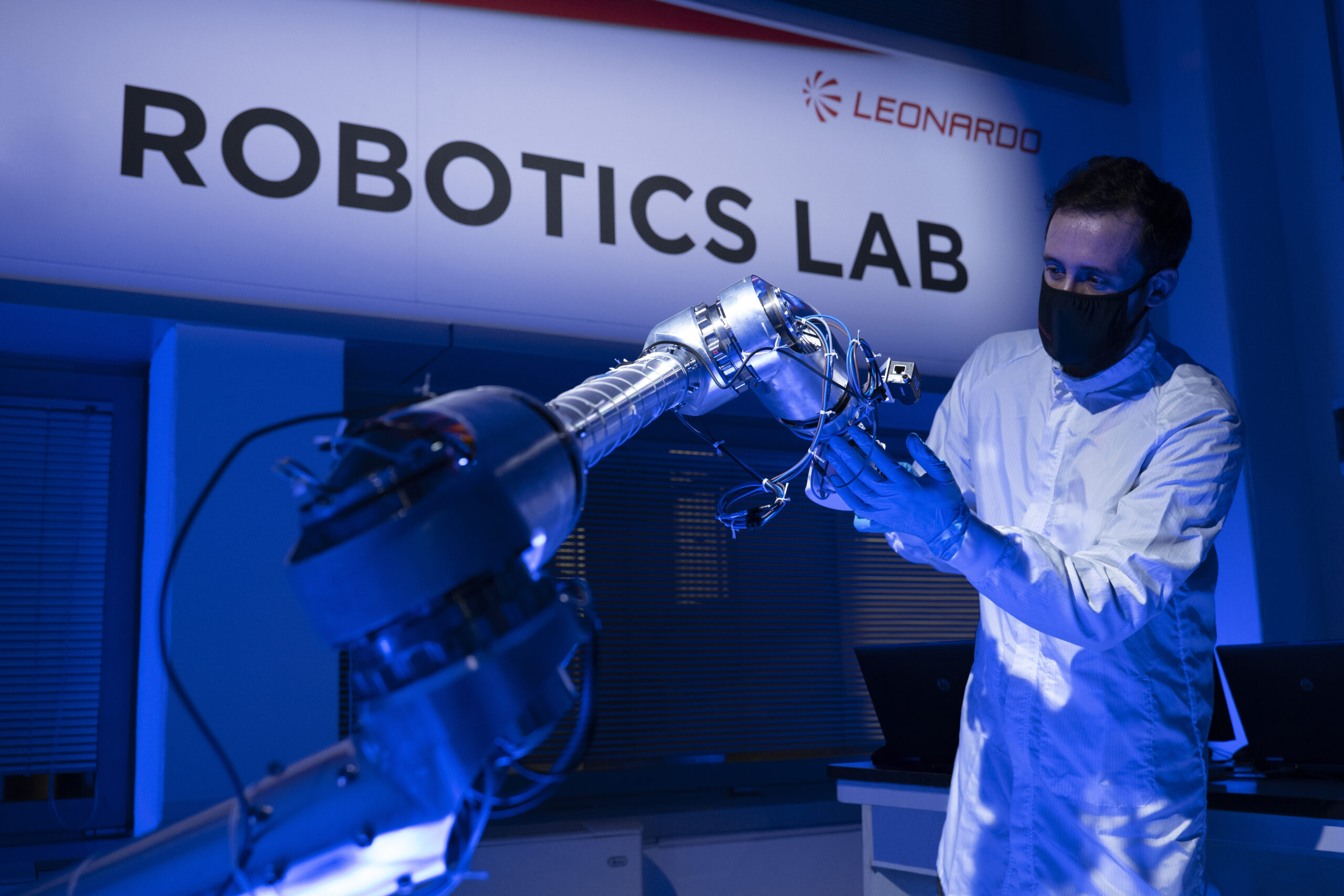What Leonardo’s robotic arm will do on Mars for ESA

Leonardo has signed a contract with the European Space Agency (ESA) for the robotic arm that will help bring the samples of Mars to Earth. All the details
The 2.5 meter long robotic arm will be built by the consortium led by Leonardo and will land on the Red Planet by the end of the decade to bring, for the first time in history, samples of the soil of Mars to Earth.
Today the group led by Alessandro Profumo signed, at the Farnborough International Airshow, a contract with the European Space Agency (ESA) to design, produce, integrate and test the Sample Transfer Arm robot.
The robot will play a crucial role in the success of the Mars Sample Return program, led by NASA in collaboration with ESA, which aims to bring Martian samples back to our planet's laboratories by 2033.
After the success of the study and prototyping phase , Leonardo, at the head of a European consortium, will now be responsible for the development of the system up to the first operations on Mars.
“The Sample Transfer Arm will be the hand that will take planetary science to a new level. Handling the precious Martian soil samples and preparing them for delivery on a fascinating journey from Mars to Earth is an extraordinary feat, ”commented David Parker, ESA's Director of Human Exploration and Robotics.
All the details.
WHAT LEONARDO'S ROBOTIC ARM WILL DO
With delivery expected by 2025, the robotic arm will be installed on NASA's Sample Retrieval Lander to retrieve the test tubes containing the Martian soil collected by the Mars 2020 mission rover and deposit them in the container that will then be returned to Earth. This will allow, upon returning to Earth, to analyze the samples in the most sophisticated laboratories and conduct unprecedented studies on the Red Planet.
“This contract confirms our leadership in space robotics, a fundamental competence in planetary exploration and in orbit operations,” said Gabriele Pieralli, Managing Director of Leonardo's Electronics Division. "This cutting-edge tool is just one example of Leonardo's technological excellence, which allows us to be on board the main missions to explore the universe, provide navigation and telecommunication services and monitor the health of our planet".
FEATURES
Structured like a human arm with "shoulder", "elbow" and "wrist", it can perform a large number of movements (7 degrees of freedom) and has its own "brain" and "eyes". Controlled by the control electronics, the limbs, joints and the "hand" (end-effector) are able to perform, with a high level of dexterity, all the tasks required by the mission, such as identifying and extracting the test tubes from the rover. or lift them off the ground, place them in the container and close its lid before launching from Mars.
Together with its vision system consisting of two cameras, the instrument receives information from the sensors and sends instructions through approximately 600 signals to the mechanisms. This architecture allows the "brain" of the system to autonomously process the best decisions and coordinate movements. Sophisticated robotics and mechatronics algorithms are incorporated into the software, to also manage collision avoidance maneuvers and avoid any impact with the lander or the surrounding environment. The extremely challenging conditions of the Martian environment, such as the presence of dust and extreme temperatures (-130 ° C / + 70 ° C), will be taken into consideration during the design and construction of the arm.
THE EUROPEAN INDUSTRIAL CONSORTIUM
The European companies involved in the construction of Leonardo's arm are AVS Added Value Solutions (Spain), ALTER Technology (France), COMOTI (Romania), Danish Technological Institute (Denmark), EMTech Space (Greece), GMV Aerospace & Defense SAU (Spain ), GMV Innovating Solution (Romania), Maxon (Switzerland), SAB Aerospace sro (Czech Republic) and 3D PLUS (France). In the breadboarding phase, OHB Italia (Italy) developed the end effector and the mechanical ground support equipment.
THE SUPPORT OF ASI
Furthermore, the Italian Space Agency (ASI) supported the entire project. "The investments made in the recent past by ASI have led to a significant growth in national skills and capabilities, and today allow us to affirm the leading role that Italy will have in the exploration of Mars and, in particular, in the implementation of the mission Mars Sample Return. The contract signed today marks a new success for the Italian industrial chain which is confirmed as an international reference in exploration missions and, in this case in particular, in the challenging and innovative sector of robotic technologies "declared Giorgio Saccoccia, President of Asi.
THE CONTRIBUTION OF THALES ALENIA SPACE (JV THALES-LEONARDO) TO THE MARS SAMPLE RETURN MISSION
Finally, we remind you that for the Mars Sample Return mission, Leonardo will also contribute to the Earth Return Orbiter (Ero) through Thales Alenia Space who will be responsible for providing the communication system that will allow the transmission of data between Earth, Ero and Mars. It will also design the Orbit Insertion Module and manage the Assembly Integration and Test (AIT) phase for the Proto-Flight model of the Ero probe, in its clean rooms in Turin and Toulouse.
In October 2020, a joint venture between Thales (67%) and Leonardo (33%), in fact signed with Airbus Defense and Space, prime contractor of the program, the Authorization to Proceed (Atp) to contribute to the development of the mission key. The first tranche of the contract of approximately 11 million euros will cover the first development and design activities, while the global contract value is approximately 130 million euros.
This is a machine translation from Italian language of a post published on Start Magazine at the URL https://www.startmag.it/innovazione/cosa-fara-il-braccio-robotico-di-leonardo-su-marte-per-lesa/ on Tue, 19 Jul 2022 14:02:11 +0000.
